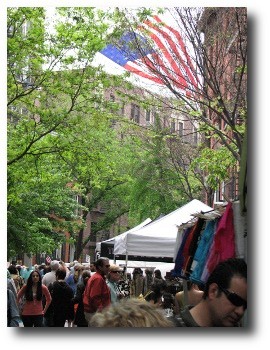"Shot Heard Round the World"
 By Tom Ehrich
By Tom Ehrich
"On the eighteenth of April in Seventy-five….”
So began a Longfellow poem that captured a moment, if not the facts, in the American journey to independence.
Silversmith Paul Revere did give an early alert of impending British action and set up a warning system from North Church. But on the night itself, Revere was captured by British troops and never made it to “every Middlesex village and farm.” Neither did Dawes. A third messenger, Prescott, delivered the warning.
As Revere was being taken into custody, he heard the gunfire that Emerson later described as “embattled farmers” firing “the shot heard round the world.”
The “fog of war” confounds both generals and their bards. But a revolution did commence, and in time a free nation did emerge. Not without struggle, not without ambiguity, bitterly divided from the start, led poorly more often than not, always beset by an avaricious moneyed class, often failing to meet basic standards of justice and freedom, sometimes a bully overseas, often a denier of rights here at home.
And yet a model of freedom that most peoples of the world wish they could emulate. The American experiment can seem flawed at times, but many dare to see those flaws and resolve to do better. The American dream can seem a vapor to many people, thanks to relentless greed in high places, and yet the dream persists, because it is grounded in freedom, not in possessions.
Right-wing ideologues don’t begin to comprehend the “American way of life,” and they certainly have no apparent intention of perpetuating anything but fear, avarice, exclusion and anger. But there is an American way of life, and you will find it in the places where people live, get along, help each other, protect the vulnerable, nurture community, and gather, worship and speak freely.
Freedom, not gunfire, is the “shot heard round the world.” And that freedom, as Emerson later wrote, is “a cry of defiance, and not of fear.”
